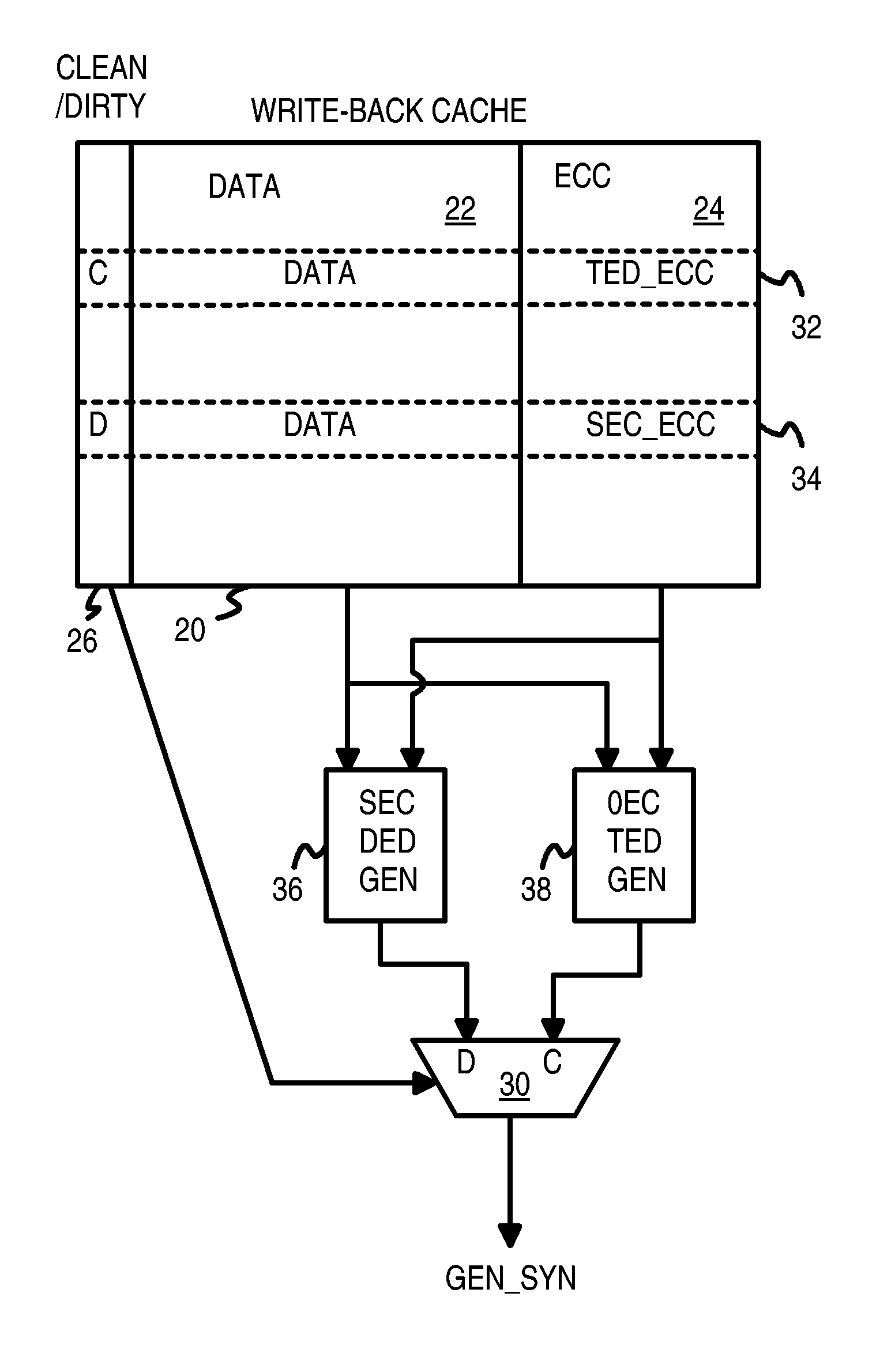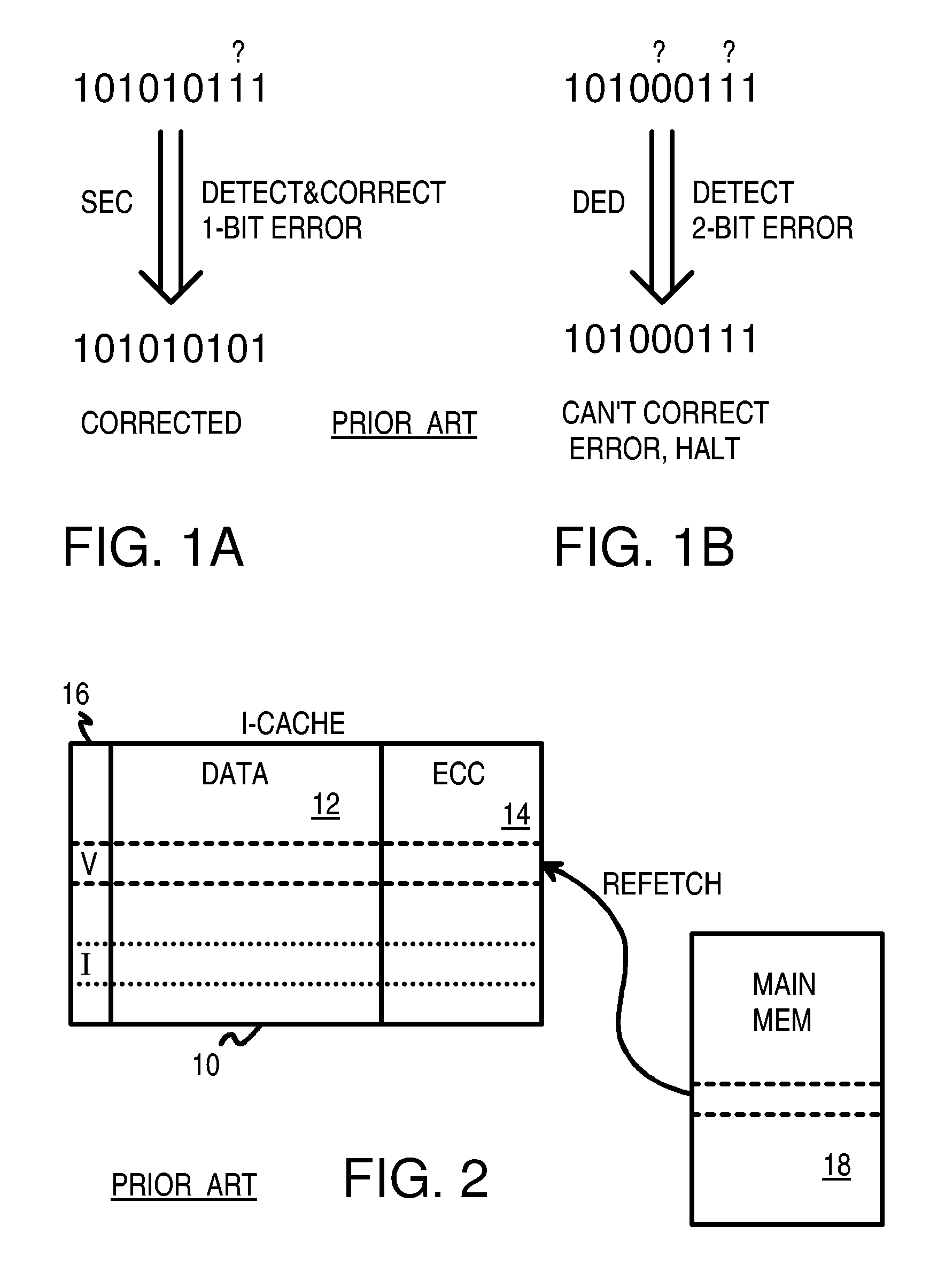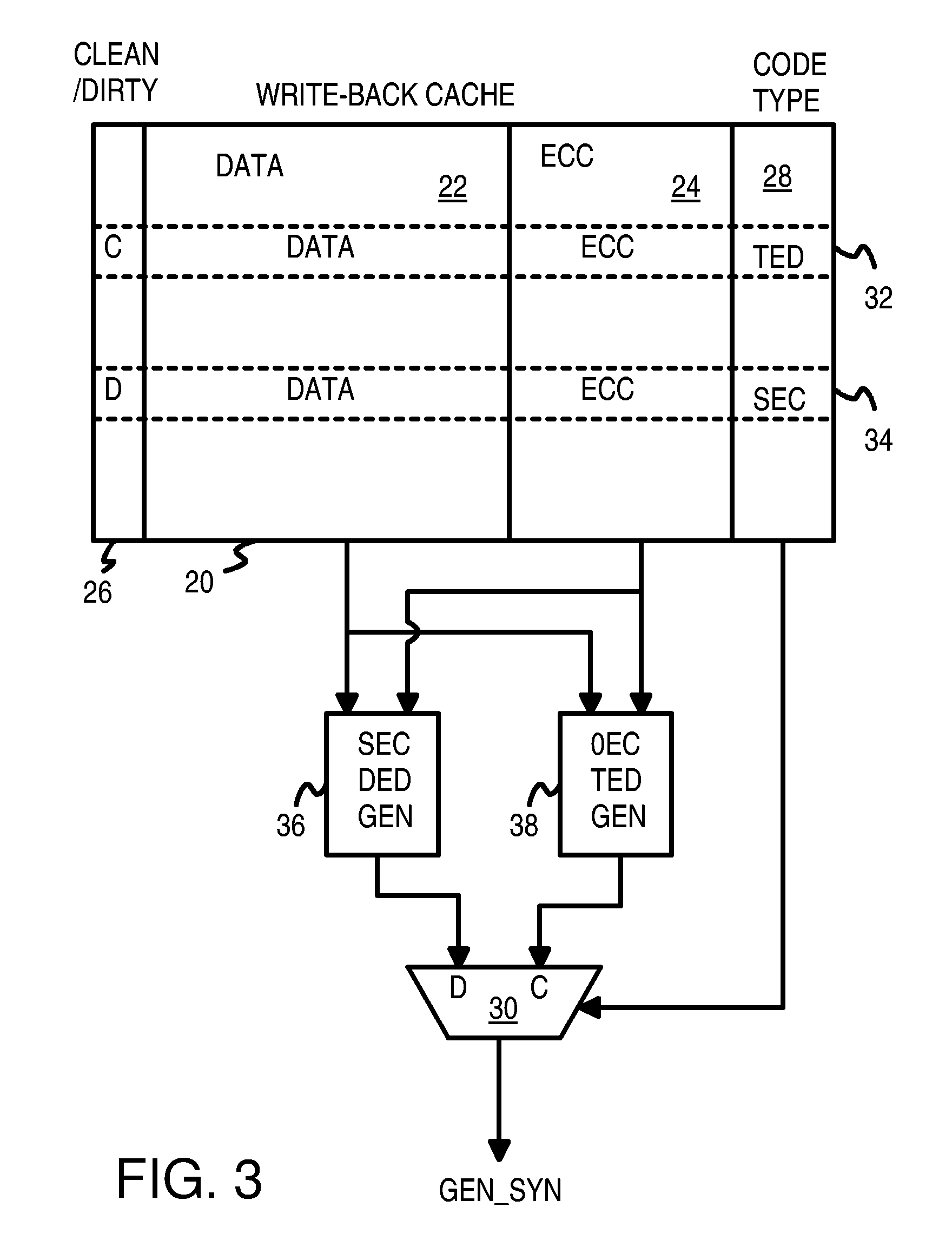Write-back cache with different ECC codings for clean and dirty lines with refetching of uncorrectable clean lines
a write-back cache and clean and dirty technology, applied in error detection/correction, redundant data error correction, instruments, etc., can solve the problems of more and more frequent system crash, more and more problems with write-back caches, and may be halted before data is over
- Summary
- Abstract
- Description
- Claims
- Application Information
AI Technical Summary
Problems solved by technology
Method used
Image
Examples
Embodiment Construction
[0022]The present invention relates to an improvement in cache error detection and correction. The following description is presented to enable one of ordinary skill in the art to make and use the invention as provided in the context of a particular application and its requirements. Various modifications to the preferred embodiment will be apparent to those with skill in the art, and the general principles defined herein may be applied to other embodiments. Therefore, the present invention is not intended to be limited to the particular embodiments shown and described, but is to be accorded the widest scope consistent with the principles and novel features herein disclosed.
[0023]The inventors have realized that a write-back cache could use two different kinds of ECC codes: clean lines could use a non-correcting code, such as a 3-bit-detect, 0-bit-correct code, while dirty lines could use a correcting code, such as a 2-bit-detect, 1-bit-correct code. Thus clean lines that have a back...
PUM
 Login to View More
Login to View More Abstract
Description
Claims
Application Information
 Login to View More
Login to View More - R&D
- Intellectual Property
- Life Sciences
- Materials
- Tech Scout
- Unparalleled Data Quality
- Higher Quality Content
- 60% Fewer Hallucinations
Browse by: Latest US Patents, China's latest patents, Technical Efficacy Thesaurus, Application Domain, Technology Topic, Popular Technical Reports.
© 2025 PatSnap. All rights reserved.Legal|Privacy policy|Modern Slavery Act Transparency Statement|Sitemap|About US| Contact US: help@patsnap.com



